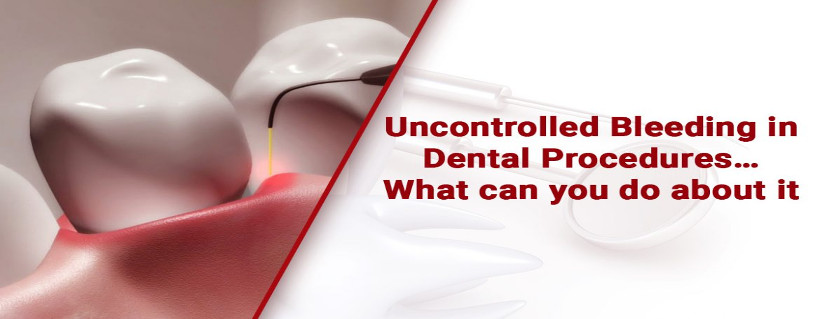Menu

Date: 2nd. Sept. 2017
In the previous part of the article, we were discussing uncontrolled bleeding during restorative procedures. In these situations, the gold standard is the use of a soft tissue laser. The reason is that in these cases the laser beam acts like a magic wand and arrests bleeding almost instantaneously at the same time brings about a reduction in inflammation in the said area. Thus within a few minutes the operating field is clean and clear and the dentist is all set to place the restoration with utmost accuracy.
All of us dentists who have performed restorative procedures would agree with me when I say that in these cases a laser is a blessing in disguise especially in the evening hours of our practice when time is of the essence as there are patients who are twiddling their thumbs in our waiting rooms and complaining about the slow service.
In these cases, quick and quality service helps us to provide maximum satisfaction to our esteemed patients this encouraging more referrals in our practices. Our patients in today’s busy world will definitely appreciate the fact that the dental treatment was provided in a visit and for us dentists handling composites no longer needs to be a nightmare.
For one thing is synonymous with composites and that is that they are so technique sensitive. Use of a dental dam is always recommended but the percentage of dentists doing so is very less. Nevertheless, managing dental dams and working on patients who have a very limited mouth opening is a tough task.
ORTHODONTICS AND LASERS
Lasers have a small but pivotal role to play in the field of orthodontics as both a hemostatic agent as well as in LLLT (low level laser therapy) which we will be discussing shortly.
Consider a patient undergoing orthodontic therapy visits the clinic impromptu and presents with a debonded bracket with the arch wire intact. It may be just one tiny bracket but to rebond it in place quickly is easier said than done. The reason is that most orthodontic patients are not serious about their oral hygiene and to rebond the bracket first the arch wire with all the modules has to be taken out. If a dentist does decide to see this impromptu patient and proceeds after sand blasting the offending bracket many a time the dentist will notice a slight trickle of gingival blood. In cases of open bite (apertognatism) where the brackets are stuck 0.5mm gingival to the normal this poses a herculean task as the dentist would like to ensure that the bracket stays in place this time.
At the back of his/her mind, the clinician knows that absolute isolation is mandatory but is handicapped in the said situation. Also bonding the bracket ideally into its previous position is mandatory else many of us know that the arch wire especially stainless steel will not fit back the way it was fitting previously. Again, in these situations the clinicians can easily use a soft tissue laser and counter the bleeding attack, clear the area of tartar, and get a successful bracket rebounding done in the least possible time.
A patient will thank the dentist for having received such a service and this would grow in a stronger doctor patient relationship. Since we are discussing exclusively about LASERS and their applications in bleeding the topic of LLLT (low level laser therapy) will be discussed at length in another article.
PERIODONTICS AND LASERS
Using soft tissue lasers is all about enhancing the experience for our perio patients. Consider a patient who needs a deep scaling and or curettage or flap surgery the conventional mode of treatment with a scalpel would obviously mandate that the patient take a few shots of local anesthesia. Now I have never met a patient in my practice who was enthusiastic about local anesthesia. All patients want to avoid it but unfortunately, they end up getting more than their share of local anesthesia.
Now many of us know that many patients avoid dental treatment because of the fear of local anesthesia. Patients don’t mind a shot in the arm but when it comes to the mouth even army men squirm in the dentist’s office.
Another fact that goes with him treatment is that there will be blood, and this fact is unavoidable as in periodontal therapy we remove causative agents like plaque, tartar, diseased epithelium, granulation tissue etc. Presence of blood on the operating field reduces vision and entails the need for a trained assistant with a high vacuum suction.
(to be continued)


| PRODUCTS | QTY | PRICE | VALUE in INR |
|---|
| PRODUCTS | QTY | PRICE | VALUE in INR |
|---|
One thought on “Uncontrolled Bleeding in Dental Procedures: Use of Lasers, Part 2”
Great i learnd it bettr to how will do it. Im tht situation.
Thank you so much
Praise the lord sir
God bless u more in ur work